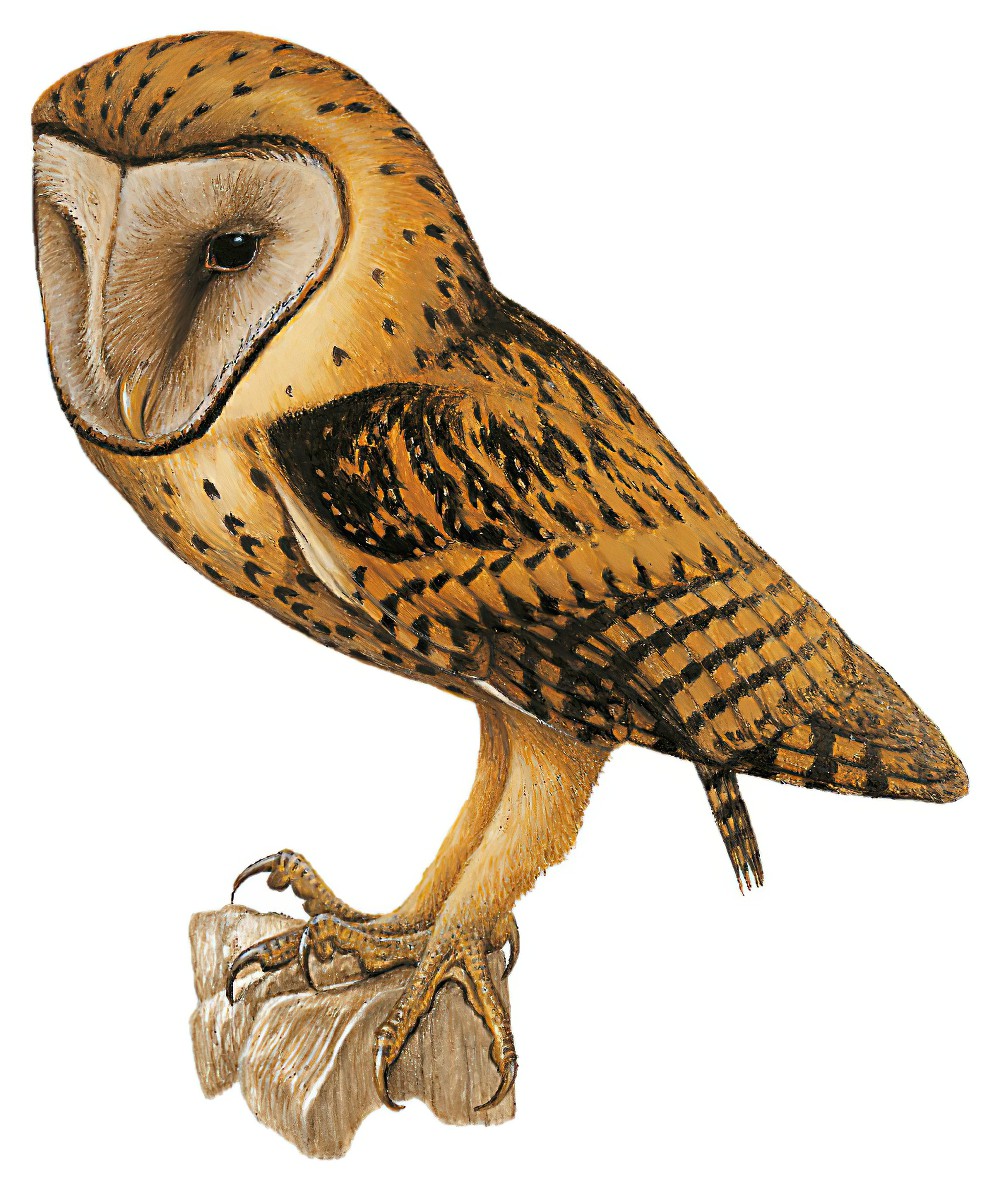Golden Masked-Owl / Tyto aurantia

Golden Masked-Owl
SCI Name:
Protonym: Strix aurantia AttiR.Accad.Sci.Torino 16 p.619
Taxonomy: Strigiformes / Tytonidae / Tyto
Taxonomy Code: nebmao1
Type Locality: New Britain.
Author: Salvadori
Publish Year: 1881
IUCN Status: Vulnerable
DEFINITIONS
TYTO
(Tytonidae; Ϯ Common Barn Owl T. alba) Gr. τυτω tutō, τυτους tutous owl, night-owl; the Common Barn Owl is the most widespread owl in the world, although recent work suggests that some of its subspecies, for example in the Americas and in Australasia, should be elevated to specific status; "1. Strix, 2. Tyto B. (Strix Savigny)." (Billberg 1828); "Tyto Billberg, Syn. Faun. Scand., 1, pt. 2, 1828, tab. A. Type, by monotypy, Strix flammea auct. = Strix alba Scopoli." (Peters 1940, IV, 77).
Synon. Aluco, Dactylostrix, Eustrinx, Flammea, Glaucostrix, Glaux, Glyphidiura, Heliodilus, Hybris, Megastrix, Nyctimene, Scelostrix, Stridula, Strigymnhemipus, Strix.
● (syn. Strix Ϯ Brown Wood Owl S. leptogrammica) "Genus Tyto Heine [Myrtha (!) Bp. 1854]" (Heine 1890). A purist replacement name.
aurantia
Late Med. L. aurantius orange-coloured < aurantia orange.
● ex “Orange-breasted Creeper” of Latham 1781 (syn. Anthobaphes violacea).
● ex “Figuier étranger” of d’Aubenton 1765-1781, pl. 58, fig. 3, and “Figuier orangé” of de Buffon 1770-1785 (syn. Dendroica fusca).
● ex “Gobe-mouche à poitrine orangé de Cayenne” of d’Aubenton 1765-1781, pl. 831, fig. 1, “Gobe-mouche roux à poitrine orangée de Cayenne” of de Buffon 1770-1786, and “Orange-breasted Fly-catcher” of Latham 1783 (?syn. Pachyramphus rufus).
● ex “Manakin orangé de Cayenne” of d’Aubenton 1765-1781, pl. 302, fig. 2, and “Manakin orangé” of de Buffon 1770-1783 (syn. Pipra aureola).
● ex “Bouvreuil de l’Île Bourbon” of d’Aubenton 1765-1781, pl. 204, fig. 1 (syn. Sporophila bouvreuil).
● ex “Motteux” or “Cul-blanc brun-verdâtre” of de Buffon 1770-1783, and “Orange-breasted Wheat-ear” of Latham 1783 (unident.).
● ex “Avis paradisiaca americana elegantissima” of Seba 1734-1765, “Promerops barbadensis” of Brisson 1760, “Promérops orangé” of de Buffon 1770-1783, and “Orange Promerops” of Latham 1783 (unident.).
UPPERCASE: current genus
Uppercase first letter: generic synonym
● and ● See: generic homonyms
lowercase: species and subspecies
●: early names, variants, mispellings
‡: extinct
†: type species
Gr.: ancient Greek
L.: Latin
<: derived from
syn: synonym of
/: separates historical and modern geographic names
ex: based on
TL: type locality
OD: original diagnosis (genus) or original description (species)












